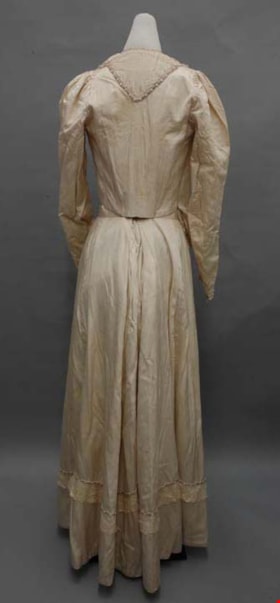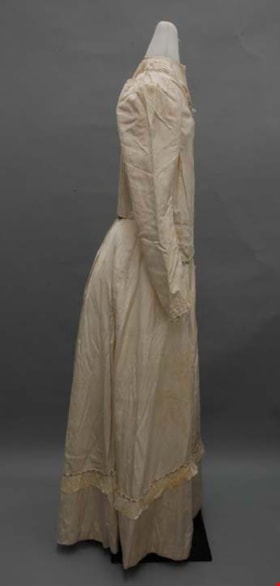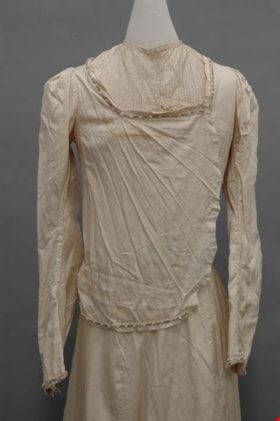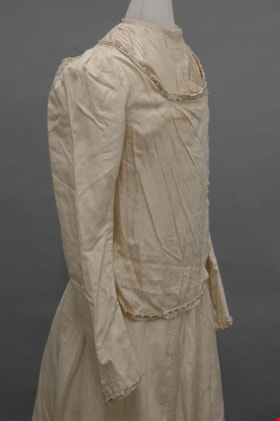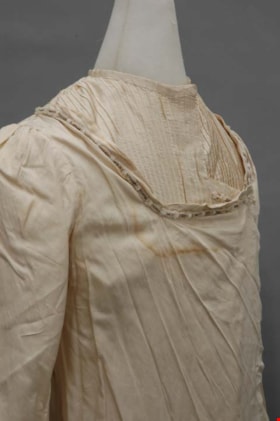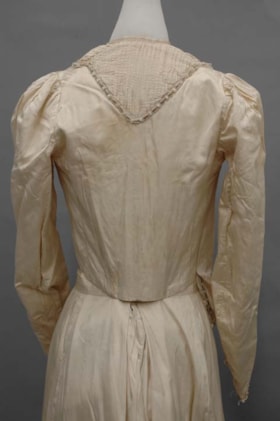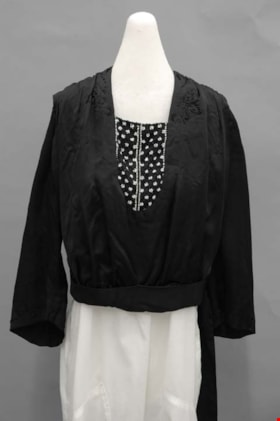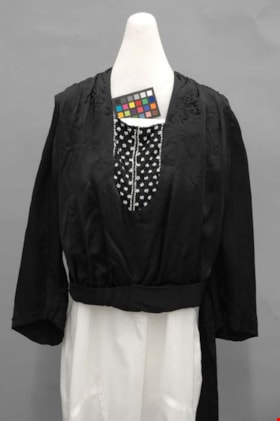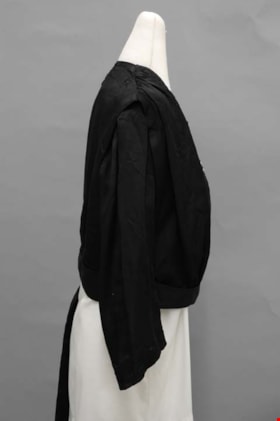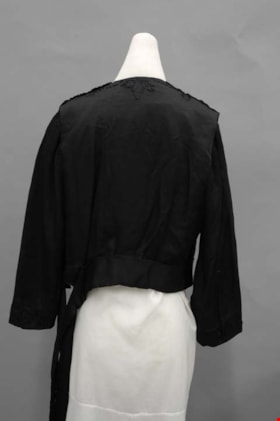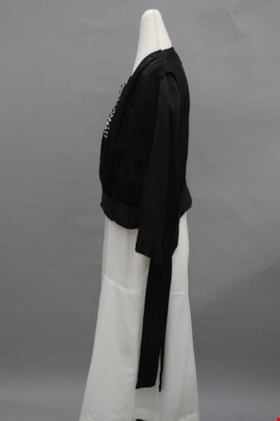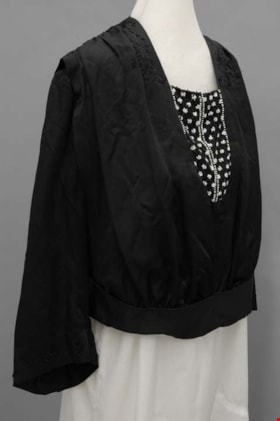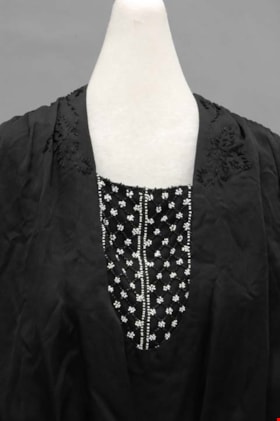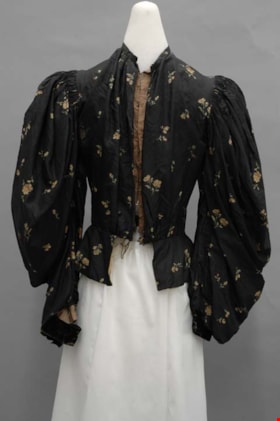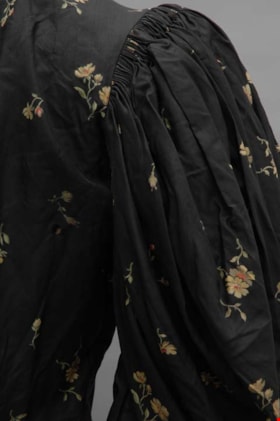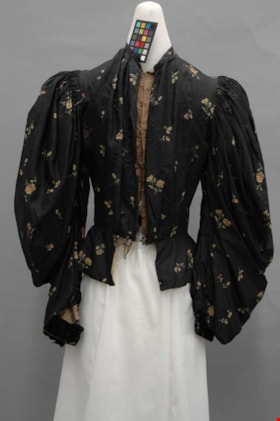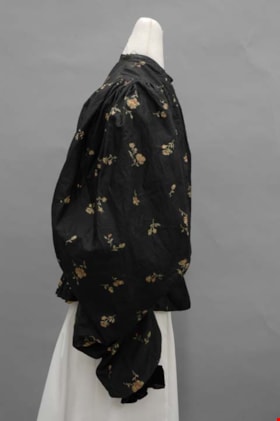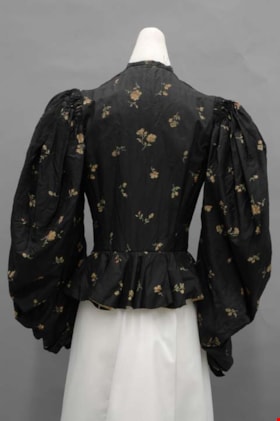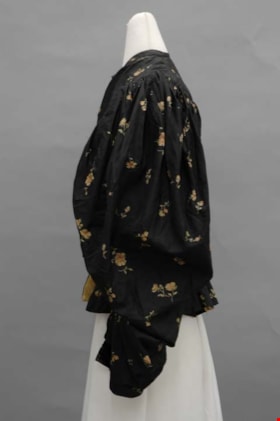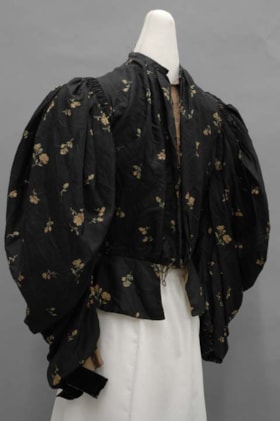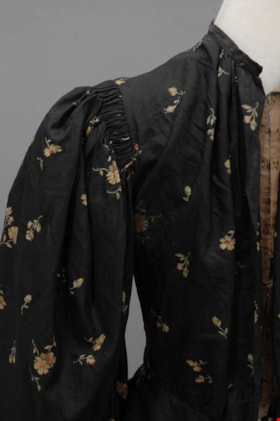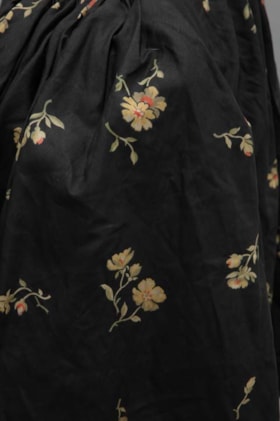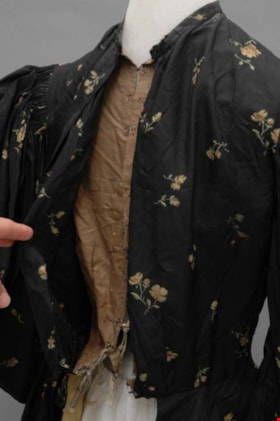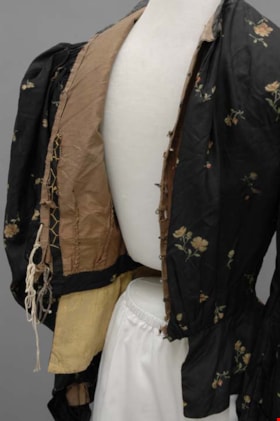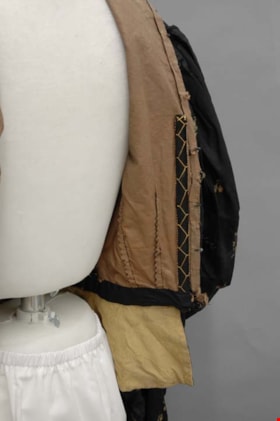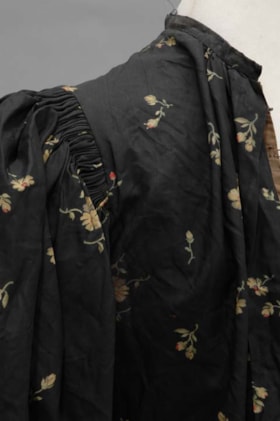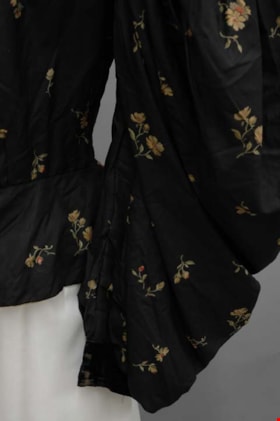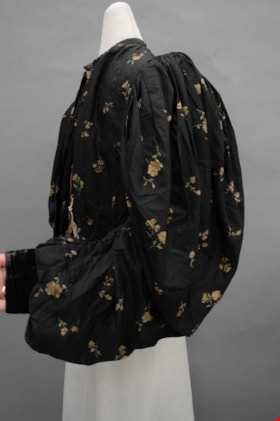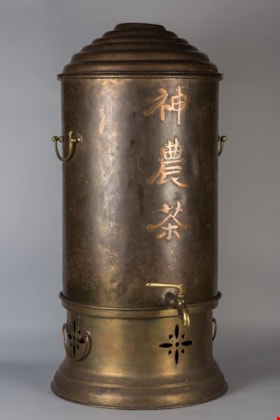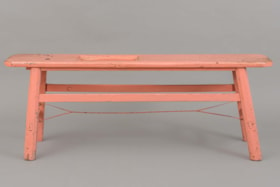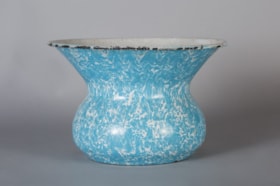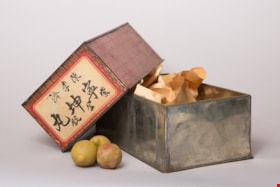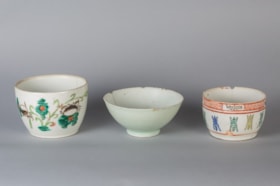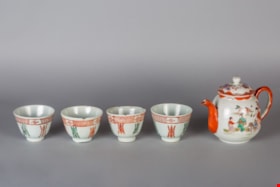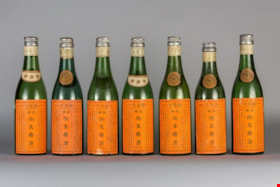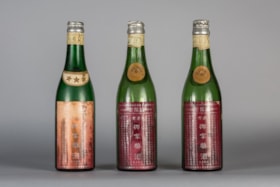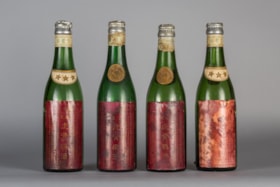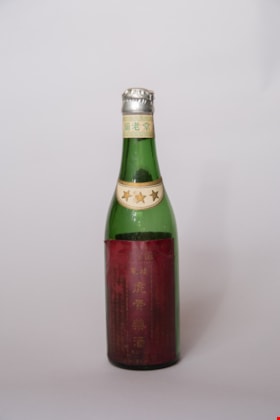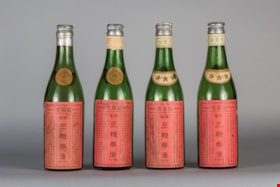Narrow Results By
Subject
- Agriculture - Fruit and Berries 1
- Clothing 10
- Clothing - Costumes 9
- Clothing - Headwear 1
- Communication Artifacts 1
- Container - Box 1
- Documentary Artifacts 3
- Documentary Artifacts - Booklets 1
- Documentary Artifacts - Forms 1
- Documentary Artifacts - Labels 2
- Documentary Artifacts - Letters and Envelopes 1
- Documentary Artifacts - Magazines 1
magazine
https://search.heritageburnaby.ca/link/museumartifact90893
- Repository
- Burnaby Village Museum
- Accession Code
- BV019.6.30
- Description
- magazine; quarterly publication in English aimed at providing a forum for information exchange in China and Hong Kong trading; glossy cover; 32 p., black text and photographs on newsprint; bifold with two staples; printed by Food Hing Offset Printing Company Limited; front cover reads: "Business Pleasure" / "Special Issue / 1978 Canton Spring Fair"; photograph on front of small ceramic bowl filled with coins and red carnation standing in centre, bowl is seated on a pedestal, two small carved lion sculptures are seated on either side; bottom of front cover includes an ad for "Seiko" watches; back cover includes ad for "Bulova" watches.
- Object History
- Publication "Business Pleasure", was part of a scrapbook created by Cecil Chue Kan Lee documenting the time he was employed as a Prodcue Buyer for Kelly Douglas and Company Limited and Western Commodities Limited in the 1970s and early 1980s. As a produce buyer for Kelly Douglas, Cecil Lee worked closely with local farmers along Marine Drive and in the Fraser Valley. The Burnaby company was one of the largest food distributors in Canada. In the mid-1970s, Lee was asked to oversee the import of Chinese mandarin oranges into Canada. Until that time, mandarin oranges had come from Japan and were sold in the winter, especially at Christmas. When the Japanese market could no longer keep up with demand, Kelly Douglas looked to China. The company relied on Lee’s cultural knowledge to build this very profitable part of their business.
- Reference
- The first few pages of articles within the publication are available for viewing on Heritage Village. Contact Burnaby Village Museum to view entire published content.
- For other records in this collection see: Business records series of Julie Lee and Cecil Lee family fonds
- Category
- 08. Communication Artifacts
- Classification
- Documentary Artifacts - - Other Documents
- Object Term
- Serial
- Country Made
- Hong Kong
- Title
- Business Pleasure
- Publication Date
- 1978
- Subjects
- Documentary Artifacts - Magazines
Images
Documents
wedding dress
https://search.heritageburnaby.ca/link/museumartifact4388
- Repository
- Burnaby Village Museum
- Accession Code
- BV988.48.63
- Description
- Wedding dress, c.1900-1906. Cream lace net lined with white china silk. High collar, pouter pigeon front, puffed sleeves. Comes with a long sash and matching skirt. The collar is made of several bands of lace. The bodice is also lace, with embroidery. On the front there is a pin tucked yoke, and bordering this on the front and back are circles of lace with line embroidery inside. Below this there are more pin tucks and bands of lace. The front puffs out creating a pouter pigeon bodice, and there is a gathered flounce below the waistline. It closes with hooks and eyes at centre back. The sash, a long yellowish-cream piece of silk fabric, would go overtop of the waist. The sleeves are gathered at the cap and again at the cuff. There are bands of lace at the lower forearm, and they end with lace flounce cuffs of the same embroidered circles seen on the bodice. The skirt has a lace top layer and a white china silk lining that is attached at the small waistband. There are tiny pin tucks in the lace layer at the waistband. Halfway down, there is a band of embroidered circles, the same as those on the bodice. They are separated by two bands of lace. There are two more of the same bands of lace near the hem. The net layer has three gores, and the lining has five. There are also two ruffles at the lining hem.
- Object History
- Donor acquired object in 1951 from the estate of her mother-in-law, Flora Isabell (McArthur) McOuat.
- Subjects
- Clothing
- Clothing - Costumes
Images
wedding dress
https://search.heritageburnaby.ca/link/museumartifact6267
- Repository
- Burnaby Village Museum
- Accession Code
- BV985.18.1
- Description
- Wedding dress, c.1907. Converted to day dress. Cream and white pouter pigeon bodice with lace and high collar. Full skirt and separate cumberbund. The shape of this dress is exemplary of the Edwardian pouter pigeon front, with a tiny waist to match. In museum records, there is a copy of the original wedding photo; on the back is written "shows dress before alteration to current state as day dress." The only readily noticeable differences are the absences of lace trim in the cuff and on the china silk bodice rosettes.
- Object History
- Made by Pattie Adelina Pearson, for her marriage to Charles James Mitchell in Gravesend, Kent, England on September 26, 1907. After, they travelled immediately to Canada, living in the provinces of Saskatchewan and Alberta, her daughter and son being born in the latter province. Pattie moved to Vancouver in 1918, where with the exception of the period when she lived in Victoria, she lived until her death in October 1981 at the age of 101 years. She would have been 27 years old when she wore the dress.
- Subjects
- Clothing
- Clothing - Costumes
Images
dress with coat
https://search.heritageburnaby.ca/link/museumartifact11490
- Repository
- Burnaby Village Museum
- Accession Code
- BV985.3403.1
- Description
- Dress with coat. c.1930. Brown china silk. Brown and yellow embroidered flowers. The coat and dress are attached. Long sleeves, sash tie collar, button trim. The 'coat' has a roll collar that falls in a deep V neck, and extends into long sashes that tie at the V point. The armholes have a corded binding. Jacket is actually sleeveless, and the sleeves attach instead to the dress beneath. They are quite loose, with a seam at the elbow. From this point to the wrist, there is a split in each sleeve. The slits are tacked back together at the wrists. A few inches below the sash tie, there is a seam in the jacket at the natural waistline. A belt is tacked to the sides and closes in the centre front with snaps. The centre front of the jacket is left out, and along the inside edge of either side front panel there is a heavy trim of metal self-fabric covered ball buttons from beneath the hips to the hem. At each side and at the centre back, there is a slit in the jacket from the knees to the hem, each trimmed in the same buttons. The dress beneath is made of the same brown silk, with an allover pattern of white and dark brown embroidered flowers. Only the sections that are visible beneath the jacket are made from this material; the covered sections in the bodice are made of ivory silk, and the covered section in the skirt are made of the same material as the jacket. There is no shaping in the dress. The jacket and dress hems both fall to calf length.
- Subjects
- Clothing
- Clothing - Costumes
Images
wedding dress
https://search.heritageburnaby.ca/link/museumartifact11635
- Repository
- Burnaby Village Museum
- Accession Code
- BV985.3523.1
- Description
- wedding dress, c.1902-1908. White china silk. Pouter pigeon bodice with half length sleeves and cumberbund. Skirt is shirred at waist and flares out at lower half. This Edwardian wedding dress is made almost entirely of china silk. Usually a lining fabric, the Edwardians often used it for special occasions such as weddings to achieve a floating, puffed up silhouette without any bulk at the waist. The bodice has three layers of ruffles at the high round neckline. The bodice front has two layers to hide its hook and eye closures. The back of the bodice has two panels four pin tucks for shaping. At the shoulders, there are rows of shirring that continue into the sleeve. The sleeves are gathered again into a cuff at their ends. The cumberbund is shirred at each end, as well as in the centre with three rows of shirring. There are three stays at the centre and one at each end; it closes with hooks and eyes which are covered by bows. The skirt has multiple rows of shirring at the waist. It has three gores, including one at the centre front that extends from the waistband without any shirring. There are two godets at the back seam and one at each of the side seams that begin at hip level and continue until about calf level. Then there is a new band of silk shirred onto the skirt, with three horizontal tucks at the bottom; the last tuck forms the hem. It is self lined under the bottom shirred section, with an un-gathered lining.
- Subjects
- Clothing
- Clothing - Costumes
Images
dress
https://search.heritageburnaby.ca/link/museumartifact11636
- Repository
- Burnaby Village Museum
- Accession Code
- BV985.3524.1
- Description
- Dress, c.1913-1914. Cream china silk skirt, silk chiffon sleeves, white cotton lawn bodice, ivory lace trim. High directoire waistline, long sleeves, full length skirt. The neckline is a boat neck, trimmed with a small band of ivory lace with an abstract design. The bodice of white lawn is unshaped except for a dart under each bust, and there is also a tuck near the waist. Each sleeve attaches onto the bodice side fronts, and the bodice is hemmed within. The chiffon sleeves extend in a kimono cut to a gathered wrist with a china silk cuff attached by chain stitch embroidery. It closes with two snaps. The china silk skirt attaches at a high waist. It has gathers all around except for the centre front. Just past the knee, it has three large tucks that go around the circumference of the skirt and a fourth that is actually a hem. The dress has snap closures up the centre back, from the neckline to just past the hips.
- Subjects
- Clothing
- Clothing - Costumes
Images
wedding dress bodice
https://search.heritageburnaby.ca/link/museumartifact16553
- Repository
- Burnaby Village Museum
- Accession Code
- HV982.20.1
- Description
- Wedding dress bodice, c.1906. Ivory china silk with glass beads. Long sleeves and small round neckline. Matches skirt HV982.20.2, also in AB106-S27-3E. Under the small high neckline, there is a yoke covered in tiny pin tucks. It is in an oval shape on the front bodice and triangular in the back, and it is edged with a pattern of white and clear beads. The bodice back is plain below this, but the front has two layers. On the first, under layer, there is a centre front closure with hooks and eyes. On the left, the yoke is edged in beading and the rest is plain. On the right, the yoke is not edged with beads; it also angles further down towards the centre front. Below the yoke, the lining fabric is half exposed (on the side furthest from centre). On the fabric-covered side, there is a small patch pocket. The second, top layer is made of the same ivory silk. It is attached at the right shoulder, armhole, and side seam. This panel lays flat at the bottom of the yoke, edged with beads. It attaches with a hook and eye at the lower left corner of the yoke, and the panel was originally tacked together in pleats on the left side. The bottom is edged in beading, and would have hung in a curved shape. Under the top panel, the bodice shape is produced with twelve bones on: one large back panel, small back panel on either side, and one front panel on either side. The sleeves are long yet small leg o' muttons, gathered at the sleeve cap and narrowing to the wrist. At the cuff, there is the same white and clear beading pattern. Among the right sleeve's beading there is a single blue bead, perhaps for the bride's 'something blue.'
- Object History
- Worn by Anna Laura Gilbert when she married Walter Campbell Lauder in Ontario, July 1906. Donated by Annis M. Underwood, the second daughter of Anna. Annis was living in New Wesminster at the time of donation.
Images
bodice
https://search.heritageburnaby.ca/link/museumartifact19455
- Repository
- Burnaby Village Museum
- Accession Code
- HV977.37.107
- Description
- Bodice, c.1915. Black satin silk. Straight cut, gathered. Three quarter length sleeves, square neck, black embroidery, black and white glass beads, sash at waist. The bodice is cut straight, falling just past the natural waist, with volume added through pleats and gathers. At each front shoulder there are gathers, as well as along the bottom front. At the bottom back, there are pleats. The neckline is trimmed with embroidery in a leaf pattern, done in black floss. At the centre front it dips down in a square neckline, with a beaded panel starting at the bottom of the square. It is made up of back and white glass beads in a diamond pattern on a black net background. The panel is in a shield shape. The sleeves are loose fitting, with black floss embroidery around the cuffs in a looping pattern. At the bottom of the bodice there is a sash that covers the pleats and gathers, and extends on the left side where it may have been tied. The sash also closes with a snap, one on the sash ties and two more at the point where they close on the bodice. There are also snaps on the left shoulder. Inside, there is a black china silk lining that closes at the centre front with hooks and eyes.
- Object History
- From the family home of Thomas Seaborn McNair and Mary Vida (nee McMillan) McNair who lived on West 33rd Avenue in Vancouver. Thomas McNair ran Edwards, McNair and Russell, an established estate agent business.
- Subjects
- Clothing
- Clothing - Costumes
Images
bodice
https://search.heritageburnaby.ca/link/museumartifact21345
- Repository
- Burnaby Village Museum
- Accession Code
- HV976.53.5
- Description
- Bodice, c.1895. Black patterned china silk with green, pink, and gold flowers. Huge leg o' mutton sleeves gather into small black velvet cuffs. Slightly puffed front, peplum. At the small round neckline, there is a small half inch stand collar. The centre front of the bodice is gathered at the neckline and at the waist. Beneath the waist, there is a peplum with most of its flare in the back. The rest of the bodice is unadorned, as the sleeves are really the main focus. The sleeves are cartridge pleated around the top of the armscye. The lightweight fabric and internal supports make each shoulder puff out to roughly the size of a watermelon. They taper slightly to the cuff (where they are gathered), but most of the volume remains for the whole sleeve. The black velvet cuffs have a flower on the outside, but no opening. Inside, the bodice is lined with brown cotton, and nine bones. The peplum is lined with gold a silk floral brocade. The bodice has hook and eye closures up the centre front.
- Object History
- Belonged to donor's mother in law from South Dakota.
- Subjects
- Clothing
- Clothing - Costumes
Images
samovar
https://search.heritageburnaby.ca/link/museumartifact23354
- Repository
- Burnaby Village Museum
- Accession Code
- HV976.225.2
- Description
- Metal Chinese tea samovar consisting of base, reservoir with tap, and lid; 3 Chinese characters placed vertically on reservoir; metal handles on base and on side of reservoir.
- Object History
- Samovar from the Kwong Chai Tong Herbalist shop, located at 122 East Pender Street in Vancouver's Chinatown. The business was founded in ca. 1915 by Lim Butt. The business was later ran by his son, Lim Bong. The samovar was situated on the counter of the shop, filled with an herbal brew which customers could pour off and drink for a small sum of money. The top portion is the resevoir for the Herbal tea. The lower portion is where the fire was in order to keep the tea warm. Vessel was used to store herbal tea which was offered to visitors for maintaining the balance of their body. Shen Nong is a deity in Chinese religion, a mythical sage ruler of prehistoric China; he has been thought to have taught the ancient Chinese not only their practices of agriculture, but also use of herbal drugs. “Shennong” can also be taken to refer to his people, the Shennong-shi (Shennong Clan). According to legend, tea was first discovered by Shennong over two thousand years ago. It is written in Classic of Tea that, "The tea drinking tradition began with Shen Nong and actively developed by the Duke of Zhou." Tea was used in ancient China. It is said that Shen Nong, the God of Medicine who tasted all herbs was poisoned by 72 different plants everyday. He relied on tea to neutralise the toxins. As for how he discovered this plant which can treat all sorts of ailments, there are many different versions.
- Classification
- Chemical T&E
- Marks/Labels
- Label contains 3 Chinese characters that are translate to: Shen Nong Cha (the God of Medicine’s tea). Product is a medicinal tea brand name which uses more than 10 types of herbs to make the tea. Consumed to relieve symptoms of a cold. Often consumed during the summer months to help someone stay cool.
- Measurements
- 60 cm height x 30 cm diameter
Images
bench
https://search.heritageburnaby.ca/link/museumartifact23363
- Repository
- Burnaby Village Museum
- Accession Code
- HV976.225.11
- Description
- Herb planing bench. Painted pink
- Object History
- Planing bench made by Lim Bong, proprietor of the Kwong Chai Tong herbalist shop at 122 East Pender Street in Vancouver's Chinatown. According to donor, "it is typical of those used in China for many generations".
- Subjects
- Persons - Chinese Canadians
Images
spittoon
https://search.heritageburnaby.ca/link/museumartifact23694
- Repository
- Burnaby Village Museum
- Accession Code
- HV975.5.34
- Description
- Spittoon or cuspidor. Blue enamel with white interior. Enamel is worn around the top opening.
- Object History
- This item originates from the Chinese Herbalist Store "Way Sang Yuen Wat Kee & Co.", Victoria B.C. which is now housed at Burnaby Village Museum. After China became a Communist state in 1949, the spittoon became much more prevalent: spittoons were placed at every conceivable public place, and were commonplace in homes as well. The mass introduction of spittoons was no doubt a public hygiene initiative, motivated by a desire to curtail the once common Chinese practice of spitting onto the floor. The spittoons used in China were typically made of white porcelain, sometimes with traditional Chinese art painted onto the exterior. The fact that there was a spittoon as part of the Way Sang Yuen Wat Kee & Co. Herbalist shop when they closed in the 1970s, may reflect that the practice of the people in 1970s Victoria was similar to those in China.
- Classification
- Chemical T&E
- Measurements
- 15 cm height x 18 cm width x 18 cm length
Images
box
https://search.heritageburnaby.ca/link/museumartifact23865
- Repository
- Burnaby Village Museum
- Accession Code
- HV975.5.219
- Description
- box, tin, unpainted, with top; pattern of top is red background with gold circles; label is in Chinese characters. Box contains orchid pseudo-bulbs, or Chinese ground orchid (Bletilla Hyacinthina). The bulbs are crushed and mixed with sesame oil, formed into balls, and then sealed inside a wax coating. The product is used to make an emollient for burns.
- Object History
- This item originates from the Chinese Herbalist Store "Way Sang Yuen Wat Kee & Co.", Victoria B.C.
- Classification
- Chemical T&E
- Marks/Labels
- Chinese characters on label literally translate to: "Chan Li Chai" (Medical factory brand), "peaceful", [indistinguishable character] and "pills". Pills manufactured by Chan Li Chai Medical Factory (Hong Kong) Limited. Chan Li Chai was founded by two families Chan and Li in 1600 AD towards the end of the Ming Dynasty (1368 – 1644). This pill is used to regulate menstruation, nourish blood, and reduce stasis. It is used to treat irregular menstruation, infertility, vaginal discharge, various prenatal and postnatal illnesses.
- Measurements
- 7 cm height x 10 cm width x 15 cm length
- Maker
- Chan Li Chai
- Country Made
- China
- Site/City Made
- Hong Kong
Images
bowl
https://search.heritageburnaby.ca/link/museumartifact23966
- Repository
- Burnaby Village Museum
- Accession Code
- HV975.5.326
- Description
- White china bowl with red rim on top and bottom of outside; blue, green, and gold characters painted on outside of bowl between red rims. Artifact is third from left in photograph.
- Object History
- This item originates from the Chinese Herbalist Store “Way Sang Yuen Wat Kee & Co.”, Victoria B.C.
- Classification
- Chemical T&E
- Measurements
- 6 cm height x 8 cm diameter
Images
tea cup
https://search.heritageburnaby.ca/link/museumartifact23969
- Repository
- Burnaby Village Museum
- Accession Code
- HV975.5.329
- Description
- White china tea cup with orange and green design. Artifact is first on the left in photograph.
- Object History
- This item originates from the Chinese Herbalist Store "Way Sang Yuen Wat Kee & Co.", Victoria B.C.
- Classification
- Chemical T&E
- Measurements
- 4 cm height x 3 cm width x 3 cm length
Images
bottle
https://search.heritageburnaby.ca/link/museumartifact23979
- Repository
- Burnaby Village Museum
- Accession Code
- HV975.5.402
- Description
- Medicinal wine bottle; transparent green glass, sealed lid wrapped in metallic foil. Around the upper portion of neck an off-white label with light teal Chinese characters. On the main body of the bottle is an orange rectangular label with printed Chinese characters. Second from right in photograph.
- Object History
- This item originates from the Chinese Herbalist Store "Way Sang Yuen Wat Kee & Co.", Victoria B.C.
- Classification
- Chemical T&E
- Marks/Labels
- Label contains characters that are literally translated to: a brand name; "nourish"; "hygiene"; "medicine"; "wine"; and "tincture" (medical alcohol/wine). When adjusted for English comprehension, product is "Health tincture". The tincture includes a mixture of Chinese medicinal herbs with the addition of caterpillar fungus and turtle shell to replenish energy. It has the function of replenishing qi and invigorating qi, replenishing blood, nourshing the kidney,increasing male libido, treating the lack of appetite, refreshing the mind, getting rid of wind in the body, and improving circulation. Circular sticker translates to: "The sale of all secret formulae non-pharmaceutical medicinal preparations in Canada is regulated by The proprietary or patent Medicine Act. This law legalizes the sale of such remedies only upon condition that the quantities of the potent drugs used in their manufacture are within the limitations set by an Advisory Board, and that these quantities are printed on the labels and wrappers used in connection with the medicine and, further, that no false, misleading or exaggerated claims or representations of a cure for any disease are made on the labels and wrappers, or in any other manner respecting this article."
- Measurements
- 30 cm height x 9cm width
- Maker
- ZiBao Tang
- Country Made
- China
- Province Made
- Guangdong
- Site/City Made
- Guangzhou Xiguan
Images
bottle
https://search.heritageburnaby.ca/link/museumartifact23982
- Repository
- Burnaby Village Museum
- Accession Code
- HV975.5.405
- Description
- Green tinted bottle with a tapering neck; red label with silver characters; label with company logo on the neck; yellow seal with green characters at the mouth which is covered with a silver-coloured seal. Object is second from left in photograph.
- Object History
- This item originates from the Chinese Herbalist Store "Way Sang Yuen Wat Kee & Co.", Victoria B.C.
- Classification
- Container
- Marks/Labels
- Label contains characters that are literally translated to: a brand name; "ginseng"; "bear"; "palm of hand"; "medicine"; "wine"; and "tincture" (medical alcohol/wine). When adjusted for English comprehension, product is "Bear palm tincture". The tincture includes a mixture of Chinese medicinal herbs with the addition of bear paw to replenish energy. It has the function of replenishing qi and invigorating qi, replenishing blood, nourshing the the kidney, increasing male libido, treating lack of appetite, refreshing the mind, getting rid of wind in the body, and improving circulation. The sale of all secret formulae non-pharmaceutical medicinal preparations in Canada is regulated by The proprietary or patent Medicine Act. This law legalizes the sale of such remedies only upon condition that the quantities of the potent drugs used in their manufacture are within the limitations set by an Advisory Board, and that these quantities are printed on the labels and wrappers used in connection with the medicine and, further, that no false, misleading or exaggerated claims or representations of a cure for any disease are made on the labels and wrappers, or in any other manner respecting this article.
- Measurements
- 23 cm in height x 6 cm in width (diameter)
- Maker
- ZiBao Tang
- Country Made
- China
- Site/City Made
- Guangzhou Xiguan
Images
bottle
https://search.heritageburnaby.ca/link/museumartifact23987
- Repository
- Burnaby Village Museum
- Accession Code
- HV975.5.410
- Description
- Green bottle with red label with Chinese characters on body. Yellow label with Chinese characters on upper neck of bottle. Yellow round label on middle of bottle. Bottle is third from left in photo.
- Object History
- This item originates from the Chinese Herbalist Store "Way Sang Yuen Wat Kee & Company", Victoria, B.C.
- Classification
- Food Service T&E - - Drinking Vessels
- Marks/Labels
- Label contains characters that are literally translated to: a brand name; "to expel wind"; "tiger"; "bone"; "medicine"; "wine"; and "tincture" (medical alcohol/wine). When adjusted for English comprehension, product is "tincture of tiger bone". The tincture includes a mixture of Chinese medicinal herbs with the addition of tiger bone and papaya to replenish energy. It has the function of replenishing qi and invigorating qi, replenishing blood, nourshing the the kidney, increasing male libido, treating the lack of appetite, refreshing the mind, getting rid of wind in the body, and improving circulation. The sale of all secret formulae non-pharmaceutical medicinal preparations in Canada is regulated by The proprietary or patent Medicine Act. This law legalizes the sale of such remedies only upon condition that the quantities of the potent drugs used in their manufacture are within the limitations set by an Advisory Board, and that these quantities are printed on the labels and wrappers used in connection with the medicine and, further, that no false, misleading or exaggerated claims or representations of a cure for any disease are made on the labels and wrappers, or in any other manner respecting this article.
- Measurements
- 23 cm height x 4 cm width
- Maker
- ZiBao Tang
- Country Made
- China
- Province Made
- Guangzhou Xiguan
Images
bottle
https://search.heritageburnaby.ca/link/museumartifact23989
- Repository
- Burnaby Village Museum
- Accession Code
- HV975.5.412
- Description
- Green bottle with red label with Chinese characters on body. Yellow label with Chinese characters on upper neck of bottle. Yellow label with three stars on middle of bottle. Bottle is furthest from left in photo.
- Object History
- This item originates from the Chinese Herbalist Store "Way Sang Yuen Wat Kee & Company", Victoria, B.C.
- Classification
- Food Service T&E - - Drinking Vessels
- Marks/Labels
- Label contains characters that are literally translated to: a brand name; "to expel wind"; "tiger"; "bone"; "medicine"; "wine"; and "tincture" (medical alcohol/wine). When adjusted for English comprehension, product is "tincture of tiger bone". The tincture includes a mixture of Chinese medicinal herbs with the addition of tiger bone and papaya to replenish energy. It has the function of replenishing qi and invigorating qi, replenishing blood, nourshing the the kidney, increasing male libido, treating the lack of appetite, refreshing the mind, getting rid of wind in the body, and improving circulation. The sale of all secret formulae non-pharmaceutical medicinal preparations in Canada is regulated by The proprietary or patent Medicine Act. This law legalizes the sale of such remedies only upon condition that the quantities of the potent drugs used in their manufacture are within the limitations set by an Advisory Board, and that these quantities are printed on the labels and wrappers used in connection with the medicine and, further, that no false, misleading or exaggerated claims or representations of a cure for any disease are made on the labels and wrappers, or in any other manner respecting this article.
- Measurements
- 23 cm height x 4 cm width
- Maker
- ZiBao Tang
- Country Made
- China
- Province Made
- Guangzhou Xiguan
Images
bottle
https://search.heritageburnaby.ca/link/museumartifact23990
- Repository
- Burnaby Village Museum
- Accession Code
- HV975.5.413
- Description
- Green glass bottle with two labels and silver covered, beer-bottle style cap. Two commercially made labels: one rectangular red with Chinese characters in black on the bottle front; one round gold with English characters in black on bottle shoulder. Artifact is first from left in the photograph.
- Object History
- This item originates from the Chinese Herbalist Store “Way Sang Yuen Wat Kee & Co.”, Victoria B.C.
- Classification
- Container
- Marks/Labels
- Label contains characters that are literally translated to: a brand name; "to invigorate the yang" (aphrodisiac)"; "three"; "whip"; "medicine"; "wine"; and "tincture" (medical alcohol/wine). When adjusted for English comprehension, product is "Three whip tincture". The tincture includes a mixture of Chinese medicinal herbs with the addition of tiger penis and deer penis to replenish energy. It has the function of replenishing qi and invigorating qi, replenishing blood, nourshing the the kidney,increasing male libido, treating the lack of appetite, refreshing the mind, getting rid of wind in the body, and improving circulation. The sale of all secret formulae non-pharmaceutical medicinal preparations in Canada is regulated by The proprietary or patent Medicine Act. This law legalizes the sale of such remedies only upon condition that the quantities of the potent drugs used in their manufacture are within the limitations set by an Advisory Board, and that these quantities are printed on the labels and wrappers used in connection with the medicine and, further, that no false, misleading or exaggerated claims or representations of a cure for any disease are made on the labels and wrappers, or in any other manner respecting this article.
- Measurements
- 24 cm height x 7 cm diameter
- Country Made
- China

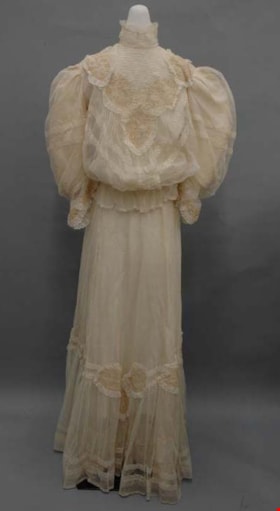
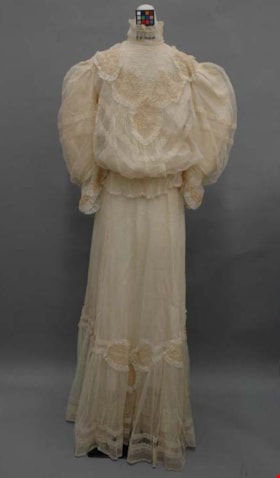
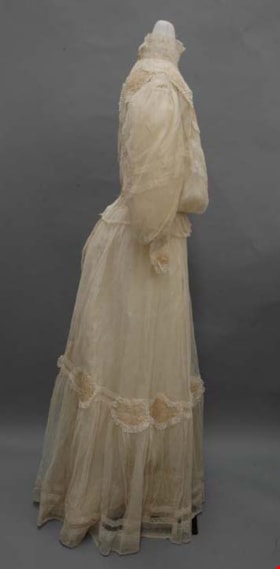
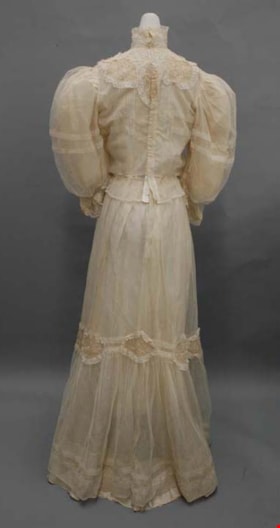
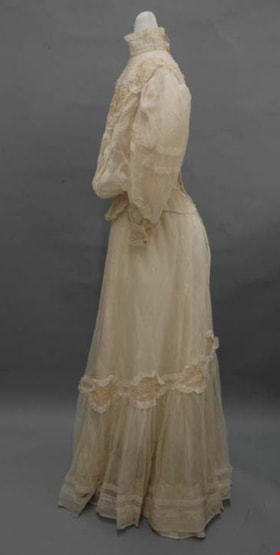
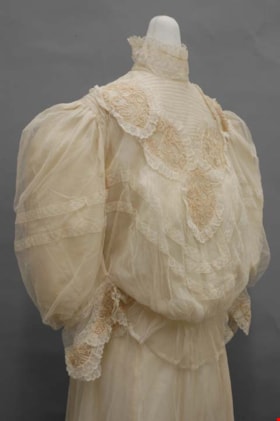
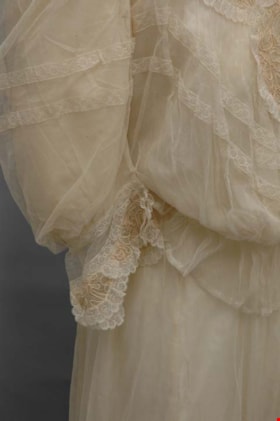
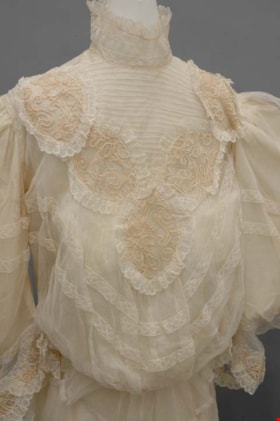
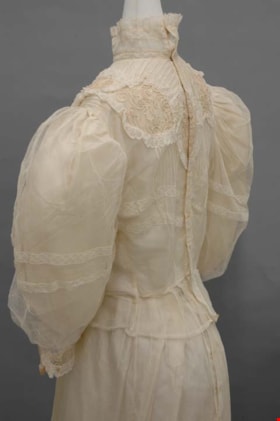
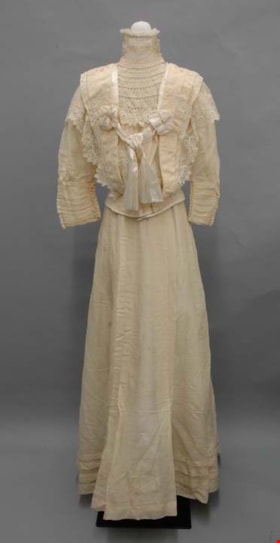
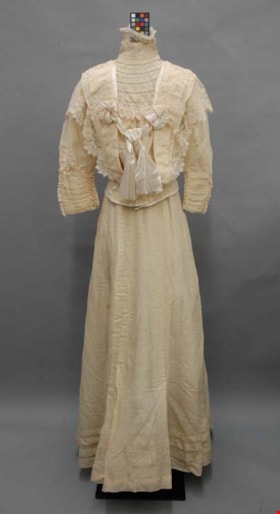
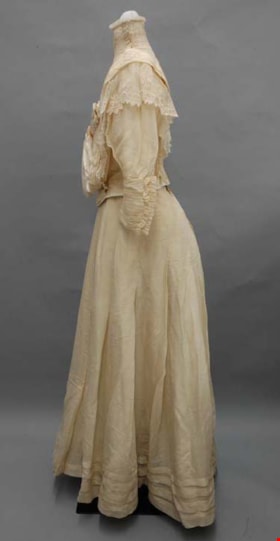
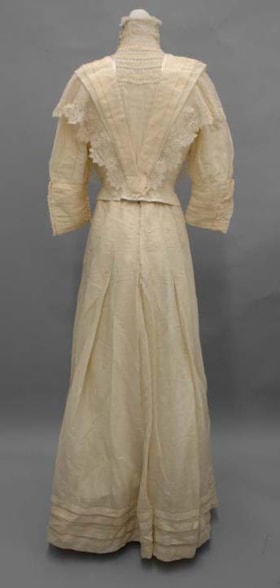
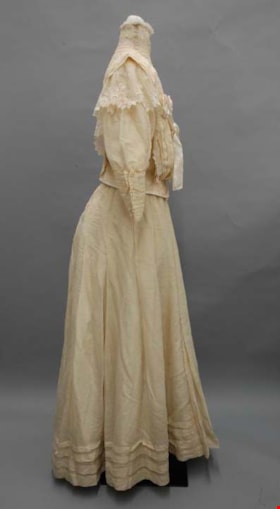
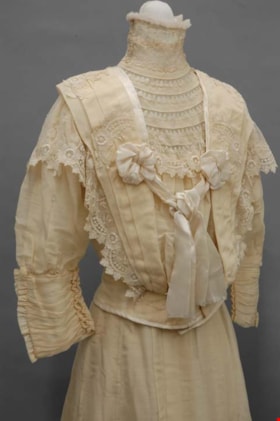
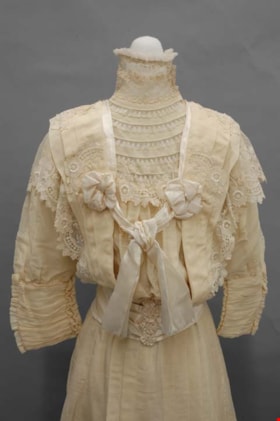
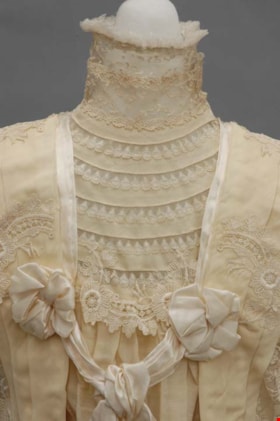
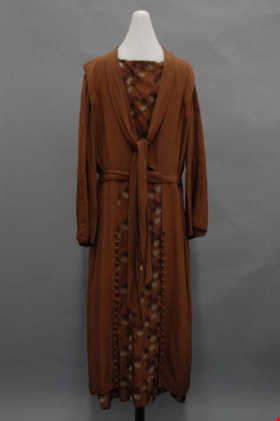
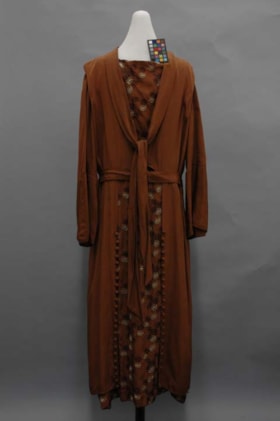
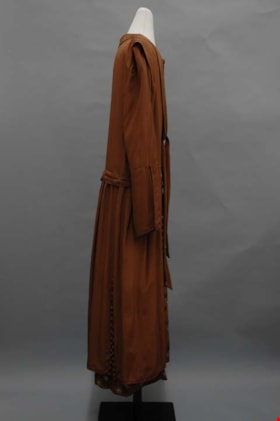

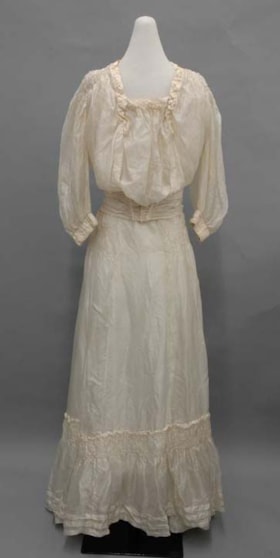
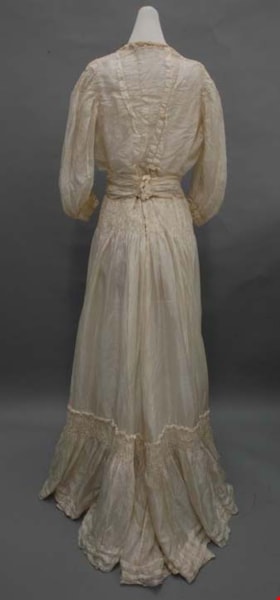
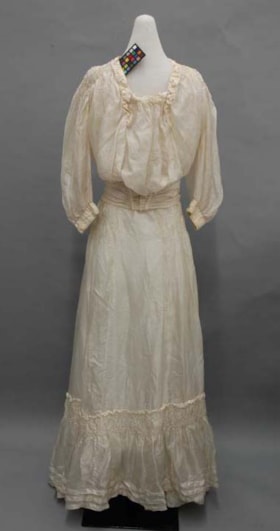
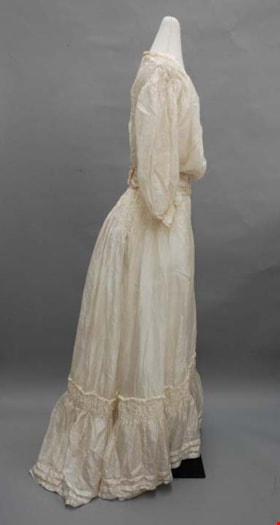
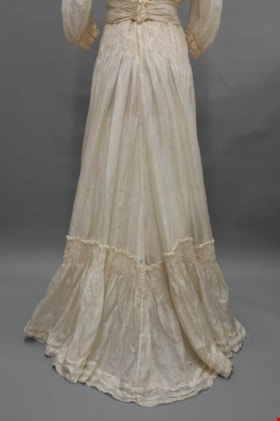
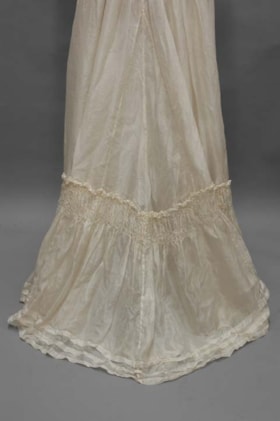
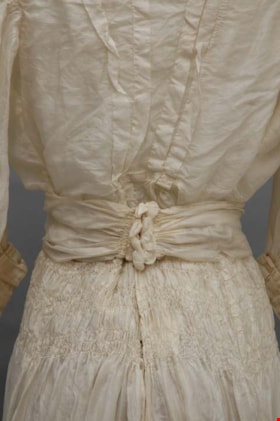
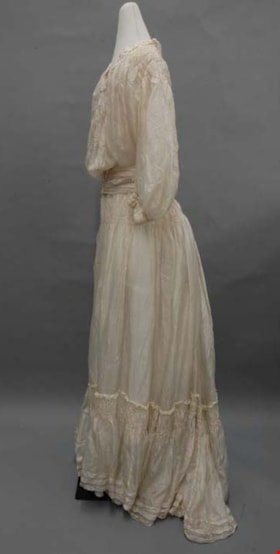
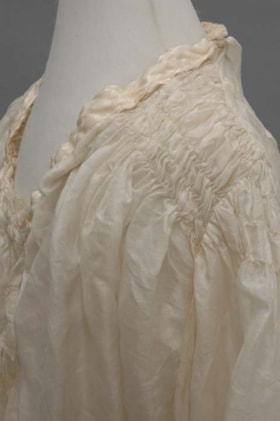
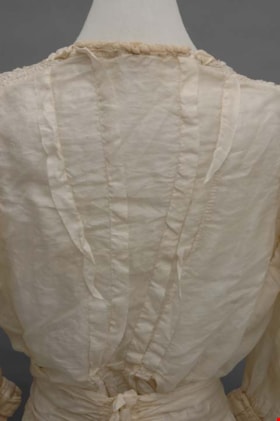
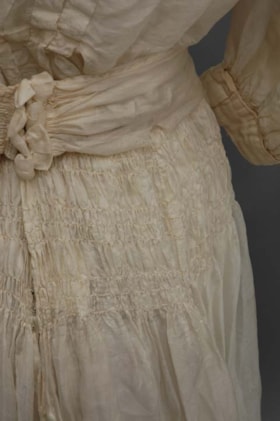
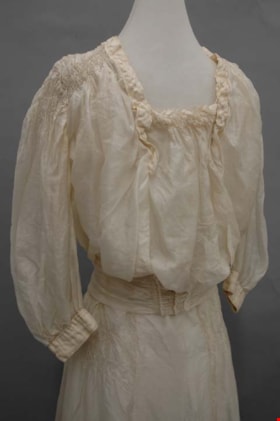
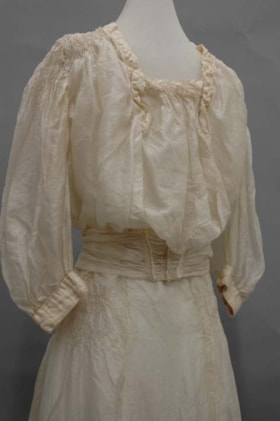
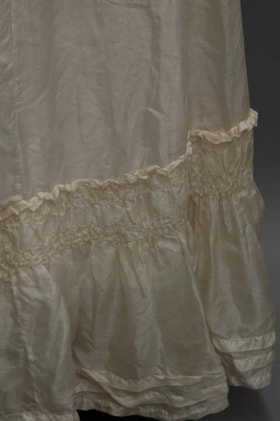
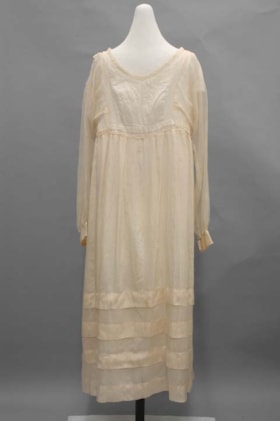

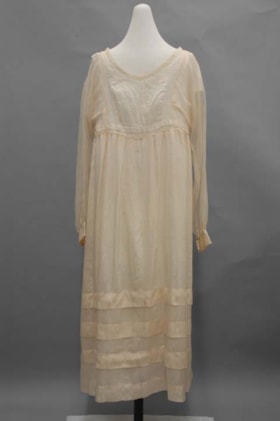
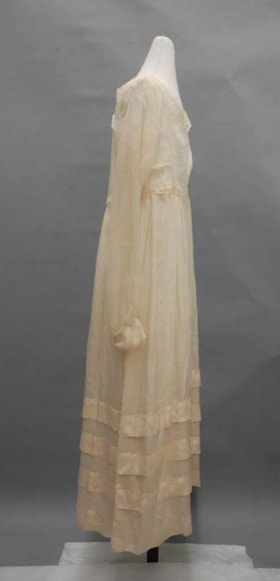
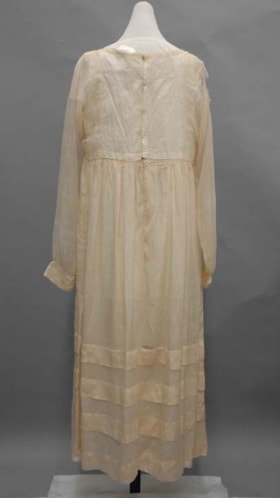
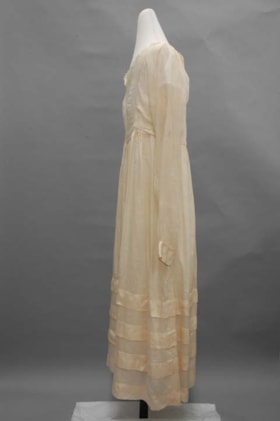
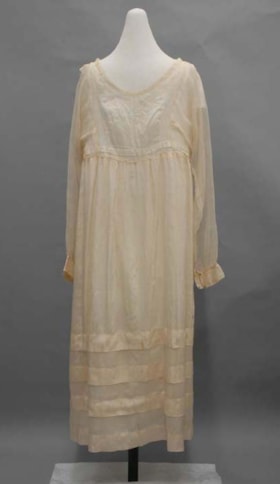
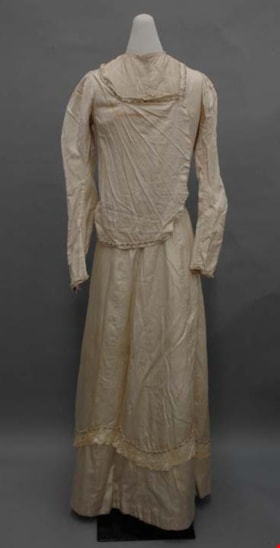
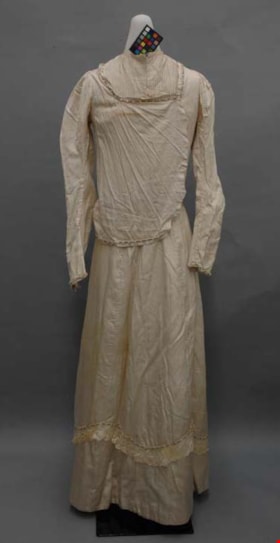
.jpg?width=280)
.jpg?width=280)
